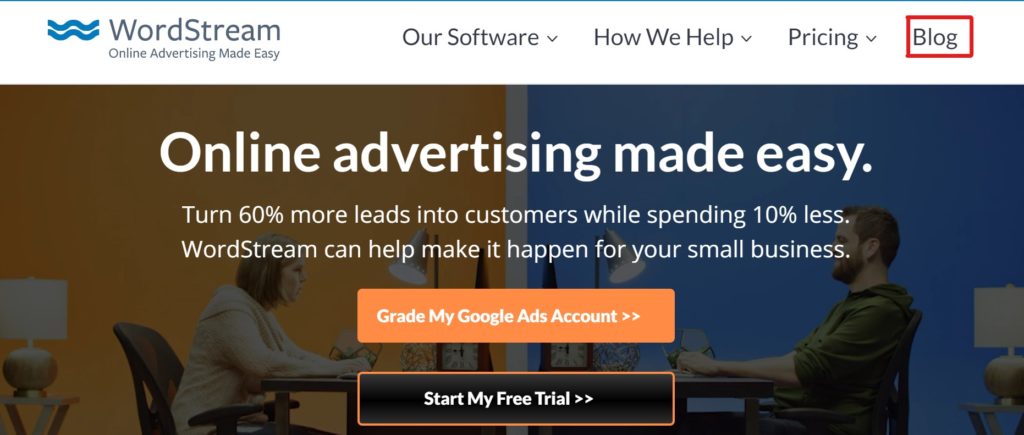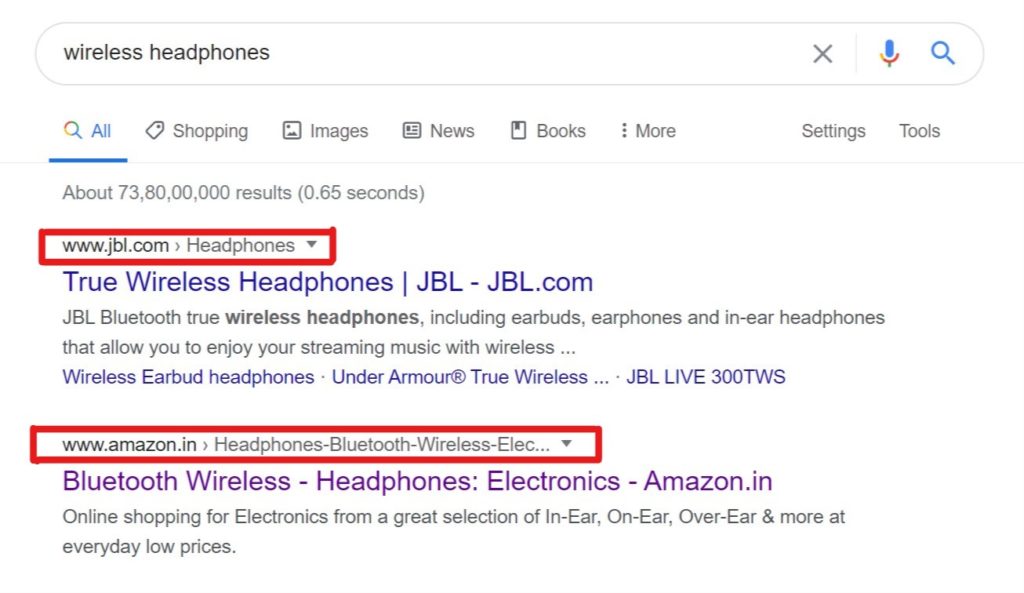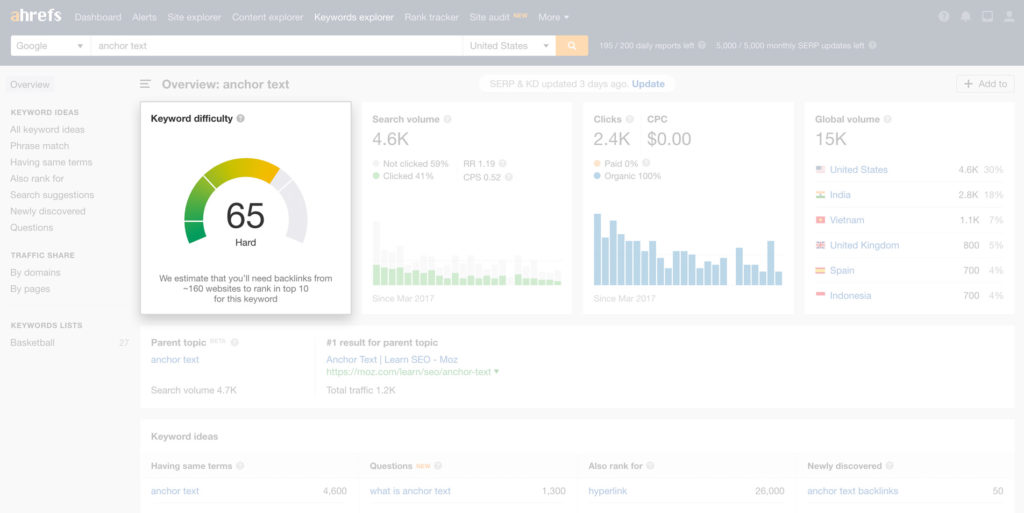“Is Your Marketing Cost Too High?”
Is your marketing strategy failing to get the results you want?
If this sounds a bit like your situation, don’t worry you’re in the right place.
Would you like to know how to get the best results with your marketing?
Here I’m going to share strategies that can cut your marketing cost up to 50% while still getting the results you want.
Whether your business is new or established, marketing help businesses to attract customers.
Marketing is a method where we promote our products and services in front of our potential customers.
It includes advertising, cold calling, promotion, and email blasts to purchased lists.
Where we pay a huge sum of money to promote our product.
Marketing often performs poorly because the targeting isn’t specific enough.
You could be wasting tons of money on advertising without ever seeing a dime in return.
So what?
What if the customers will reach out to you for themselves rather than being pushed by advertisements.
In this, scenario there is a high chance that they’ll buy from you.
But, how?
That’s because Google has become the buyer’s guide.
In a survey, 51% of shoppers said they use Google to research before they buy to ensure they are making the best possible choice. (Think with Google)
When your potential customers search on Google for research, make sure you are there.
It’s a great way to reach new potential customers.
Just make sure you meet your consumers in their moments of need.
So that your ideal buyers will find you on Search Engine Results Pages (SERP).
Instead of spending on advertising, here you can earn the attention of customers, and makes the company easy to be found.
This brings me to our first step.
1. Create A Blog Not a Website
I’m not talking about a website where content is organized into pages.
Websites are static in nature.
That includes about page, contact page, products or services pages, the home page, and more.
Here I’m talking about a blog.
A place where you share informative and engaging posts for your audience to connect on a more personal level.
However, blogs can be part of a larger website.
As you can see below.

Take WordStream, it is an online advertising software and the website has sales pages showcasing their product and its features.
But the website also has a blog section where they regularly create content and teach users how to improve conversions and get more leads.
Usually, the content is created for the specific industry keywords and rank on them.
And this is how the website gains free organic traffic from search engines and make more sales.
So, now you’re ready to create a blog! But wait! There’ more!
There’s another important step you should know before getting started.
Stay connected to find out.
Do you want free traffic?
Well, who doesn’t?
Everyone wants free traffic.
But, there are over 600 million blogs in the world today. Everyone is striving to occupy Google’s top.
So, how will you rank higher on Google?
That’s where SEO comes in.
SEO stands for Search Engine Optimization.
It plays a vital role in your search engine rankings.
SEO is a practice to rank higher to get free organic (non-paid) traffic from search engines like Google, Bing, and Yahoo.
SEO is the process of optimizing your website content and structure for search engines.
SEO can bring free traffic to your site but ranking on the first page of search engine results won’t happen overnight.
It takes a considerable amount of time to create and promote the content.
It is worth the investment (both time and money).
But where to begin? How to get started? What are the basics?
There are two broad categories of SEO: On-page SEO and Off-page SEO.
On-page SEO
On-page SEO focus on optimizing web page content in order to rank higher for the relevant phrases.
On-page SEO includes optimizing title tags, content, internal links, and URLs.
#1. Keyword Research
The keyword is a search query that people enter into Google.
The keyword research process involves identifying words and phrases your target audience enter into search engines.
So that you can optimize your content for the same keywords.
In the process, you will make a list of targeted keywords that you can rank for.
At the end of keyword research, you’ll have an in-depth understanding of what your customers are searching for with the exact words and phrases that they use.
But how do you identify those targeted keywords?
Here’s the way.
Steal Competitor’s Keywords
Keyword research is a time-consuming process, you have to start with seed keywords and browse through hundreds of suggestions.
But you don’t need to take the hard way.
Why spend the time when your competitors have already done the hard work for you?
Here is the secret.
Steal the keywords that your competitors are ranking for. Save yourself a lot of time and energy.
But what if you don’t know who your competitors are?
Enter a seed keyword (main keyword) into Google and see who ranks on the front page.
For example, Let’s say you’re selling wireless headphones. Here the seed keyword is wireless headphones.
Let’s enter the keyword into Google.

You can see the competitors. Now you have a list of competitors but what’s next.
To get the keywords you’ll need a keyword research tool.
Here I’m using Ahrefs as a keyword research tool.
Grab the URL of one of the websites from your list and enter into Ahrefs’ Site Explorer and you’ll get the keywords that it ranks for.
You can collect enough keyword ideas from a single competitor to keep yourself busy for months.
But if you want more you can use the rest of the list of your competitors and repeat the process.
You’ll Fail
- If you choose the wrong keywords.
- If you get the wrong kind of traffic
What do I mean when I say wrong keywords? The keywords that you’ll never rank for.
These keywords are usually called “head keywords” (Also known as Seed Keywords).
Let’s take our previous example “wireless headphones”. Take a look at the competition for this keyword.
AHREFS IMAGE
https://www.forbes.com/sites/johnrampton/2015/06/22/how-to-do-keyword-research-for-a-new-site-and-is-it-really-necessary/#4f52237a7194
Chances are you’ll probably never rank for this keyword.
But, why?
Because you are a brand new website and haven’t built up any Domain Authority.
So how to pick the right keyword for your brand new website?
Find Low-Competition Keywords
Identify easy keywords.
Here’s how:
Ahrefs’ Keyword Difficulty Metric

Keyword difficulty is a metric that measures how easy or difficult a keyword would be to rank for a particular search query.
Let’s take a look at the keyword difficulty for “wireless headphones”.
AHREFS IMAGE
As you can see the keyword difficulty for “wireless headphones” is 65. Which means that it’s harder to rank on top of search results.
That means it is the wrong keyword for your website.
So, how to choose the right one?
Target Long-Tail Keywords
Long-tail keywords are longer and more specific keywords consist of 3-4 words. These are the keywords that buyers are more likely to search when they’re closer to a point-of-purchase.
That means these keywords are more relevant to whatever you are selling.
Most of the websites fight for head keywords to rank higher on the search engine result pages. Because there’s less competition for long-tail keywords it is much easier to rank.
Which means longer the keyword phrases are more specific and easier to rank for the term.
These are low search volume keywords that don’t get a lot of search volume. But the visitors who use long-tail keywords are more likely to buy your service or product.
Ranking for the long-tail keywords is much easier for a new website.
But now you’re probably wondering how to find long-tail keywords.
Well, one of the easiest ways is to take a head keyword and begin typing it into Ahref. These will be more specific keywords related to the head keyword.
Let’s take our keyword “wireless headphones”.
Enter the keyword into Ahrefs’ Keywords Explorer.
Choose a phrase match from the left-hand menu, then use the Volume filter to get the keywords with search volumes that you think to be low in your niche.
https://ahrefs.com/blog/long-tail-keywords/
1. Title Tag
The title tag is the headline you’ll see on the SERP (search engine results page).
It plays a critical role in both the higher ranking and the search user experience.
The title tag is the decisive factor in whether or not someone clicks on your link.
A good title can make or break the user experience.
Therefore, it becomes your first priority to think from the user perspective, in addition to optimization and keyword usage.
Because our sole purpose is to attract clicks from well-targeted visitors.
Using a keyword at the beginning of your title tag can have more impact on search rankings.
2. Meta Description
The meta description is a short description of your content on the page.
As you can see below, the meta description appears in the search engine results under your headline.
Use the keyword in your meta description and compel users to click.
3. Header Tags
Header tags are used to structure the content on a page.
Using heading tags from h1 to h6 you can divide your content into scannable blocks.
It makes your content easier and more enjoyable for visitors to read.
Header tags can help Google to figure out if a page is relevant to a user’s query.
4. URLs
URL stands for Uniform Resource Locator.
It is a location of a resource on the internet commonly known as a “web address”.
Add keyword in the URL.
It will indicate both humans and search engines about the content.
5. Satisfy Search Intent
Search Intent is the main purpose of a search query. It is the main intention of a user to type a query into a search engine.
Search intent is a “why” behind the search query?
Is he looking for information?
Is he looking for a particular website? or he wants to buy something online.
It’s the most important factor in on-page SEO so, make sure that you create the content that satisfies search intent.
Off-Page SEO
“Off-page SEO” is a practice of creating a site’s reputation, trustworthiness, and authority.
The term Off-page SEO applied to certain actions that are taken outside of your own website to rank higher in search engine results pages (SERPs).
Google analyzes the Off-page SEO factors to determine the reputation of your site.
Link Building is the most important part of off-page SEO.
As they determine the site’s relevance, trustworthiness, and authority.
For example, if you have high-quality backlinks, search engines will assume that you’ve got great content.
Links play an important role in Google to determine the value of any web page.
#1. Guest Posting
Guest posting is essential for growing a brand new blog. It allows you to write an article on other popular blogs.
Being a guest blogger you’ll have an opportunity to connect with a new audience.
In return, you’ll earn a valuable link in the post.
But, how will you find the guest blogging opportunities?
Here’s the way.
Google Search Strings
Search the below keywords.
[“keyword” and “write for us”],
[“guest author” “keyword”]
[“guest post” “keyword”]
[“keyword” inurl:contributors]
[“keyword” inurl:authors]
[intitle:”guest post” “keyword”]
[inurl:”keyword” “contributor”]
Google will least down the websites with pages that contain the exact phrases.
Competitor Backlinks Analysis
You can imitate the competitor’s strategies to earn backlinks too.
Use the Ahrefs tool to find out the backlink profile that is helping your competitors rank. So that you can find guest blogging opportunities from the same sites.
300+ Guest Blogging Opportunities
Check out this article you’ll have a list of 300+ guest posting opportunities.
Technical on-page SEO checklist
Technical SEO is the technical aspects of a website in order to get higher rankings in the search engine result pages.
Now you’ve created the content on your website.
But if your website is not optimized for technical SEO. Then you’re not going to rank.
But what to do about it
Where to begin?
If I were to cover this topic in-depth, I would have to create another advanced guide.
Instead, I’ll cover the important aspects of technical SEO.
#1. Website Speed
We can all agree we prefer a site that loads quickly to one that loads more slowly. But to what extent does it matter? Let’s turn to the data to find an answer.
According to 2018 research by Google, 53% of mobile users leave a site that takes longer than three seconds to load. This is a problem since the same research revealed the average mobile site takes 15 seconds to load.
Those statistics play out on other browsers and platforms as well, continually emphasizing the need for quickly-loading sites for effective customer retention and conversion rates.
Website speed plays an important role which determines where your website shows up in the search results.
There is plenty of evidence that shows Google Penalize Sites that load slowly.
But more importantly, your visitors will leave if your website doesn’t load within three seconds.
They stop visiting your site and you’ll lose out on sales and traffic.
#2. Is Your Site Mobile-Friendly?
#3. Create an XML sitemap
#4. Fix Duplicate Content Issues
#5. Register your site with Google Search Console
Search Console, Website Speed, Mobile Optimization
https://mangools.com/blog/learn-seo/
Publish Content in Multiple Formats
Blogging is great but we can’t deny that other types of content are growing rapidly.
Youtube has an average monthly audience of almost 2 billion unique visitors.
Youtube isn’t just best for video content, it’s also the second most visited site after Google. The platform is the best place to get in front of a teenage and young adult audience.
In the US alone 81% of internet users aged between 15 and 25 are using the platform.
YouTube has emerged as a perfect place to find entertainment and knowledge.
Searches of “how-to” videos on YouTube are growing 70% year on year. So when you post videos on youtube, you can tap into the growing audience.
You may be thinking that creating a video is just too hard I don’t have any experience in video production.
Creating videos is no longer the difficult task it used to be a few years ago. You don’t need to have a huge budget for video production.
Just grab a camera and start shooting videos.
Podcasts
[Infographic – https://www.podcastinsights.com/podcast-statistics/]
It’s also worth starting a podcast.
More than 40% of Americans now listen to podcasts.
Podcast listenership has continued to grow tremendously every year.
Within the past year only, the podcasting listenership grew from 18.5 million episodes to 29 million.
Certain format suits for certain people.
For example, your customer may not have the time to read your latest article but, maybe they’ll hear your podcats episode on their way home from work.
